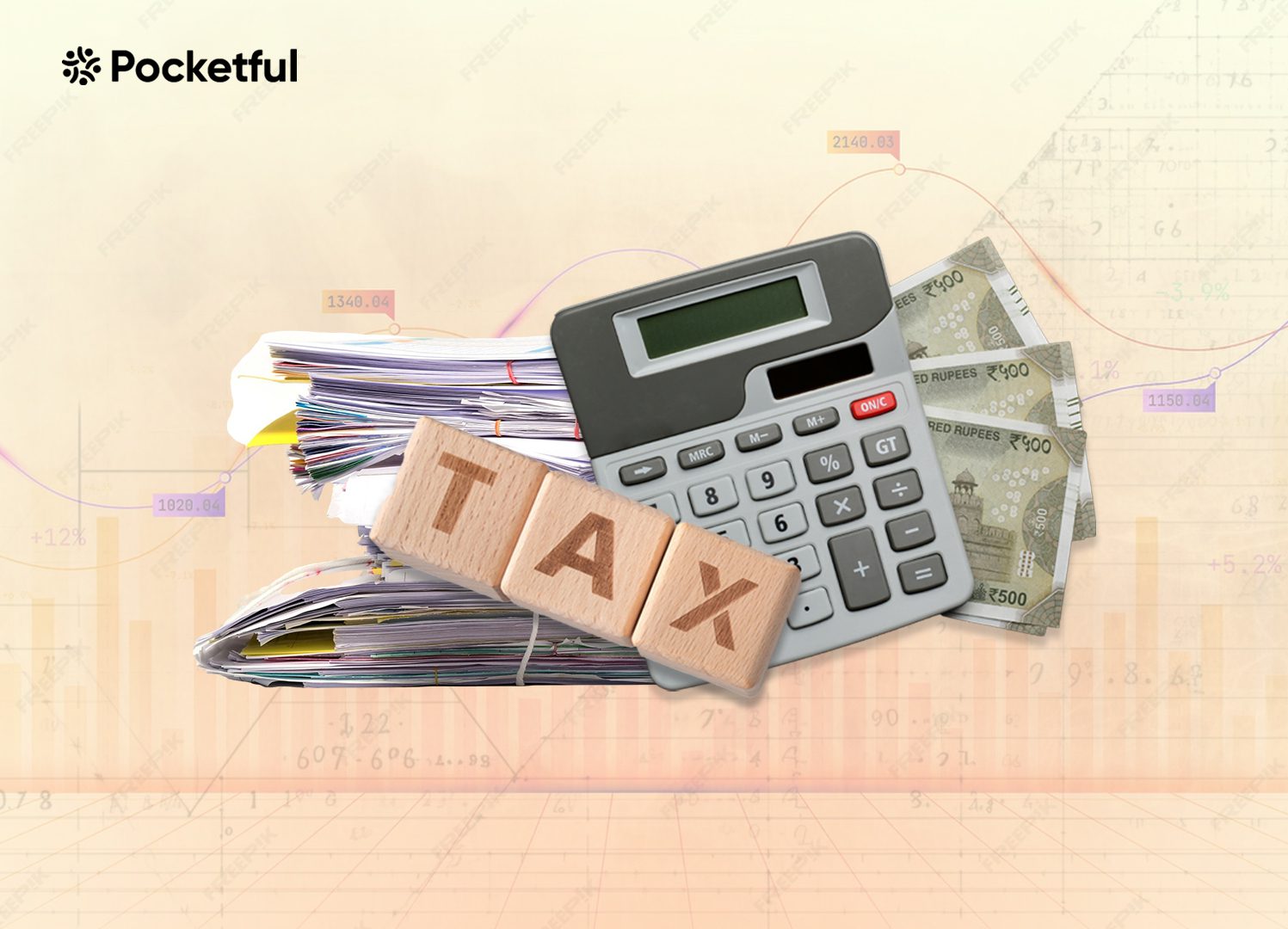| Type | Description | Contributor | Date |
|---|---|---|---|
| Post created | Pocketful Team | Sep-23-24 | |
| Internal linking | Nisha | Feb-15-25 |

- Blog
- what is profit after tax how to calculate it
What is Profit After Tax & How to Calculate It?

Profit After Tax is a key metric that shows the true profitability of a company. With the understanding of PAT, you can make better estimates about the financial health of a company, its investment potential, and its growth prospects.
In this blog, we’ll explain exactly what Profit After Tax means and why it’s such a big deal. We will present a simple step-by-step guide on how to calculate it, as well as the impact of DTL and DTA on PAT and key PAT ratios.
What is PAT?
PAT, or Profit After Tax, is also known as net profit and is the amount of income left over after deducting all operating expenses, interest, and taxes from the total revenues. PAT reflects the actual profitability of the business and provides an accurate picture of the profit left for the shareholders after fulfilling all kinds of obligations. It is considered one of the important financial health indicators and indicates the company’s efficiency in managing its expenses and taxes.

PAT is an important metric for investors and analysts when judging a company’s performance. A high PAT generally indicates a strong financial position, enabling the company to reinvest for growth, pay dividends, or reduce debt.
Calculation of PAT
The process of calculation of PAT involves the deduction of all the expenses from total revenue. Here’s a step-by-step process for calculating PAT:
- Determine Total Revenue: Ascertain the total revenue or sales generated by the company during a certain period.
- Subtract Cost of Goods Sold (COGS): Subtract the COGS, or the direct costs incurred to produce the goods or services. The resulting figure is known as Gross Profit.
- Less Operating Expenses: Subtract all operating expenses like salaries, rent, utilities, administrative, depreciation, etc. to arrive at Operating Profit, known as EBIT.
- Less Interest Expenses: Subtract interest expenses on loans or borrowings to get Earnings Before Tax (EBT).
- Apply Tax Rate: Apply the appropriate tax rate on EBT and determine the amount of tax amount. Deduct the tax amount from EBT to arrive at Profit After Tax (PAT).
This process ensures that you eventually get the net profit or PAT, which reflects the company’s profitability in its true essence after deducting all expenses and taxes.
Formula: PAT = Total Revenue−COGS−Operating Expenses−Interest Expenses−Taxes
Importance of PAT
Profit After Tax (PAT) is an important metric due to the following reasons:
1. Indicator of True Profitability: PAT depicts the actual profit of a company after all expenses, which gives a proper view of its financial health.
2. Basis for Investment Decisions: Investors use PAT to evaluate the firm’s performance, judge its growth potential, and use this as a basis for their investment decisions.
3. Helps in Financial Planning: Companies always consider PAT before making any critical decision regarding reinvestment, expansion, debt reduction, or distribution of dividends.
4. Measure of Efficiency: PAT reflects the efficiency with which an organization controls its costs, expenses, and taxes.
5. Impacts Shareholder Value: A good PAT might increase dividends and appreciation in the market price of stocks, hence increasing shareholder value.
Read Also: What is Capital Gains Tax in India?
Impact of Deferred Tax Assets and Deferred Tax Liabilities on PAT
| Impact of Deferred Tax Asset (DTA) on PAT | Impact of Deferred Tax Liability (DTL) on PAT |
|---|---|
| 1. Increase in PAT in Future Periods:DTA can be utilized to reduce taxable incomes in future periods, thus increasing Profit After Tax. | 1. Reduces Future PAT:DTL, in simple terms, basically accounts for the amount of taxes that are to be paid at some future date, which would reduce PAT. |
| 2. Enhances Cash Flows:By reducing future tax liabilities, DTAs enhance the future cash flows of a company, with more funds available for reinvestment or distribution. | 2. Decreases Future Cash Flows:As the DTLs become due, they result in a cash outflow that affects the liquidity of the company and may hamper reinvestments. |
Key PAT Ratios and Metrics
Profit After Tax (PAT) can be used to calculate various ratios and metrics mentioned below:
1. Net Profit Margin Ratio:
- Formula: Net Profit Margin = (Profit After Tax / Total Revenues) × 100
- Use: This ratio represents the portion of revenues that a company retains as profit after taking into account all the expenses, including those related to taxes. A higher net profit margin would indicate better control over cost and more efficiency. This helps the analyst interpret the profitability of a firm in comparison with its peers.
2. Earnings Per Share (EPS):
- Formula: EPS = (Profit After Tax – Dividends on Preferred Shares) / No of Outstanding Shares
- Use: EPS reflects the profit earned by each outstanding share of the company. In other words, EPS is the net income a company has generated per share. A higher EPS relative to its peers shows the company is more profitable than its peers.
3. Return on Equity (ROE):
- Formula: ROE = (Profit After Tax / Shareholders’ Equity) × 100
- Use: ROE reflects the company’s efficiency in using shareholders’ investments to earn profits. A higher ROE compared to peers indicates more efficient management in generating profit. Therefore, it is a very important ratio for peer comparison.
4. Return on Assets (ROA):
- Formula: ROA = (Profit After Tax / Total Assets) × 100
- Use: ROA measures the profitability of a business in relation to its total assets. It helps the analyst or investor gauge how effectively the company has deployed its assets compared to other companies in the sector.
5. Dividend Payout Ratio:
- Formula: Dividend Payout Ratio = (Dividends Paid / Profit After Tax) × 100
- Use: The ratio indicates the percentage of earnings paid as dividends to its shareholders. This allows the investor to understand how well the company balances reinvesting for growth versus returning cash to shareholders.
Read Also: Breakdown of CTC: A Detailed Analysis
Conclusion
An understanding of PAT and its related ratios is crucial to gauge the financial health of a company and make appropriate investment decisions. PAT shows not only the actual profitability of an enterprise but also acts as a key metric for other financial metrics that act as guidelines for investors and analysts. By being able to calculate and interpret PAT, you will be better equipped to grasp key details about the efficiency of the firm, its future growth potential, and overall performance and make well-informed investment decisions.
Frequently Asked Questions (FAQs)
How does PAT impact EPS?
PAT affects EPS directly as an increase in PAT increases the EPS and vice-versa if the number of outstanding shares remains constant.
What is the impact of DTL on PAT?
The PAT for future periods will be reduced as DTL increases taxes payable in the future.
What is the impact of DTA on PAT?
The PAT for future periods will increase as DTA decreases taxes payable in the future.
What is a good PAT margin?
A good PAT margin depends on various factors such as industry, company’s life cycle, etc., but generally speaking, the higher the PAT margin, the better profitability and cost management.
Why is PAT important to investors?
PAT helps the investor gauge the real profitability of a company, its financial health, and future growth potential.
Disclaimer
The securities, funds, and strategies discussed in this blog are provided for informational purposes only. They do not represent endorsements or recommendations. Investors should conduct their own research and seek professional advice before making any investment decisions.